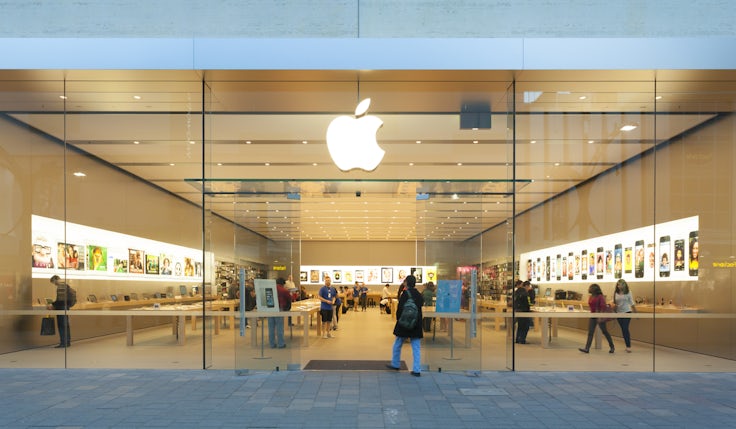Video SEO: Moving on up
As search engines change and grow, instructive and entertaining videos are becoming a crucial way for brands to get an edge on competitors in search rankings and keep their audience engaged.

Video content might have become an integral part of the marketing mix, but many brands seem lost when it comes to search engine optimisation for video.
Search agencies offer clients ‘first page’ guarantees on their search engine rankings, but how many will use video to achieve that? A look at the statistics suggests they should. Video results have appeared in about 70 per cent of the top 100 search listings on Google this year, while YouTube broke through the 5 per cent barrier of all UK internet visits.
Travel site Holiday Extras sees video search engine optimisation (SEO) as critical. Anthony Clarke-Cowell, who heads the brand’s video team, calls it “a fundamental facet of our SEO strategy”. He adds: “It’s a cornerstone in our plans to improve engagement with customers and our team.”
In the past 12 months, Holiday Extras has invested £20,000 in creating video “to enhance customer experience and drive SEO rankings by serving up relevant, informative and unique video to search engines.” The reasons are simple: “People who view our videos are about 60 per cent more likely to book and they’re also less likely to complain,” Clarke-Cowell explains.
“Videos help to increase the average time spent on the site and reduce the bounce rate from our pages. Our content helps us to retain good positions in the natural search lists,” he adds.
Video search and video hub sites have been mainstream since 2004, but content on these sites has evolved dramatically over the past few years. In 2007, Google announced ‘blended’ or ‘universal’ search, adding video and images to its search algorithms.
As Danny Denhard, lead of SEO at VoucherCodes.co.uk, explains:”Technology improved and copyright infringements decreased but, more importantly, Google dramatically accelerated the monetisation of dynamic content – perhaps the most significant recent development in video search. This investment from Google and other large companies has forced the video search market to evolve and grow.”
Five years on, SEO professionals are of the view that video results are gaining growing prominence in Google’s results pages. YouTube has started to adjust the rankings of videos on its site to “reward engaging videos that keep viewers watching” – in other words, less clicking and more watching.

Andrew Smith, a member of the Chartered Institute of Public Relations social media panel and lead trainer on digital marketing, says this drive towards quality, rather than quantity, on Google and YouTube will see video play a crucial role in SEO strategy.
“Google is starting to look at search and the quality of content available to its users. For example, instead of ranking YouTube on views, it is assessing the content consumption in terms of minutes viewed,” Smith explains.
“It is also looking at how information is consumed on its search page, analysing what happens when people click on a link. For example, do they immediately click back to the search, suggesting the top links are irrelevant?”
However, marketers are still not fully exploiting video search, says Smith.
“Consensus is emerging in the SEO industry that video results have ever-increasing prominence in Google’s results pages. Despite this, there seems a surprising lack of knowledge and investment in basic video SEO techniques, such as video site maps.”
VoucherCodes’ Denhard explains that a brand’s approach to video search can be similar to keyword search. “Brands that create ultra-relevant, compelling content and target core keyword searches will succeed,” he says.
Holiday Extras includes full details of its videos on its site to improve its search rankings, as well as links to its YouTube channels, homepage and social media pages. “The fact that YouTube now ranks videos according to watch time, rather than clicks, is a big incentive to produce engaging content,” says Clarke-Cowell.
Yet optimising video for search rankings isn’t the exclusive domain of big brands. “Video is a bit of an equaliser in the SEO world, acting as a tool for smaller brands looking to make an impact,” says PR and marketing manager Nick Gibbens of premium UK shaving brand The Bluebeard’s Revenge. The brand ranks on the first page of Google in the hotly contested ‘how to shave’ category of videos. How?
“We researched the top related keywords for search traffic and ensured they were included in the file name and video title and that the video description was built around the key terms we were targeting, like ‘shaving tips’ and ‘how to shave’,” he explains.
“It’s easier to rank video content for competitive keywords than ‘normal’ content when video results are incorporated into the search engine results page. Google normally only shows two or three videos in a set of results, which makes them immediately prominent over traditional results. This gives you the opportunity to claim a higher percentage of traffic.”
‘How to’ videos are a popular avenue, especially as consumers are far more likely to engage if the clip directly addresses their needs. According to Google, there are three times as many searches for the term ‘how to’ than there are for ‘music video’ on YouTube.
As ‘how to’ searches gain popularity, many brands, such as eSpares, are now using YouTube ‘how to’ searches to advertise their products and show customers how to use them.
The brand sees advertising associated with ‘how to’ searches as a way to put its service in front of customers at an appropriate time.

But while YouTube is all but synonymous with online video, it isn’t always the best place to host your branded content because it holds so many distractions.
Nigel Allan, social media manager at WWF International, prefers to embed video on the WWF site and then refer people to the webpage.
“If they’re watching on YouTube, the next thing they’re likely to do is watch another video, but if they are on our site then they may read more or download a report,” he says.
“If you send them to YouTube, before you know it they are looking at a video of a cat jumping when you’ve been trying to engage on them on the conservation of tigers.”
Brands also need to bear in mind that Google and YouTube are not the be-all and end-all of online search. New search engines are emerging that can trawl social networks as well as video sites and provide user personalisation.
One such site is Blinkx. According to company president Suranga Chandratillake, it was built from the ground up using search technologies that “listen to” and even “see” the web.
“On Google, you search for words on a webpage, [but] with video there are no such words and what is in the video might not be in the [tagged] text [or titles], so it can be misleading. The difference with our search is that it also uses speech and visual analysis.”
Unlike YouTube and iPlayer, which only search through their databases, Blinkx searches across the web and boasts “35 million hours” of audio, video, viral and TV content from sites including YouTube.
Chandratillake clearly spies an opportunity in spite of the dominance of the big players. “Google is a major player but still primarily for text web search. Given the lack of a real web video search function on Google, there’s a huge opportunity to become another option.”
There is potentially a huge opportunity for brands too. SEO for video has received little attention as yet, but as video content on the internet grows, the scramble to be at the top of Blinkx, Google, YouTube and other search rankings will only intensify.
Viewpoint

Albie Attias
Ecommerce director
King of Servers [IT equipment specialist]
How are you working to provide video content that is easily found?
“No one knows exactly how the search engines work except for a small group of people who work for them. Brands can only postulate based on tests, experience and what the search engines make publicly available.
Experts will tell you that search engines aim to give their users the best possible experience and, to this end, they are trying to best understand programmatically what content is about and how well it is received by those using or viewing the content.
Google has long said it wants to reward good quality content, and with its latest updates it has firmly kicked the shortcuts that search marketers have been using out of the game.
It’s now all about developing and marketing good quality content that hits the spot with your target market so that it generates links, social sharing and visitors, and as a result Google will reward such content with higher rankings.
When we’re working with our agency, Bite Digital, to create any kind of video content, we do keyword research and determine the right keywords that we need to focus the content on. Then, when the video is being produced, we do all we can to ensure the content is easy for users to understand and the search engines to find. This includes having catchy but descriptive titles, adding ‘closed captions’ or subtitles within the video and having high quality descriptions of the content – for example, unique phrases and grammatically correct sentences.
However, having a highly optimised video will not necessarily mean that our videos will rank for our chosen keywords, especially with highly competitive keywords. We think search engines probably measure the number of users visiting and sharing the content to help gauge its popularity and quality. With this in mind, it’s important to think about how the video is promoted as part of the marketing mix so that people get to see the content in the first place.
Insight from the experts

Andrew Smith, CIPR social media panel
“Google continues to advise the world to focus on creating great content as the route to good search result positions. Combining compelling and relevant video content with due attention to tried and tested video SEO techniques would seem to be the wise short-to-medium-term strategy for those with existing video content to promote – or those considering video as an effective route to improved reach and engagement via Google and YouTube.”

Nigel Allan, social media manager, WWF International
“Good copy is important for your videos and I try to ensure that everything is titled well, in the same way that a webpage is. I often edit the titles and ensure there’s an engaging description and the right tags. You need to spend this time doing so – and you need to ensure that you’re accurate with your tagging so you are matching your video content to your audience.”

Glen Hartman, global MD for digital consulting, Accenture Interactive
“If you manage to create relevant content that people want to share, through social media, for example, it can attract inbound links that will directly boost your SEO ratings. But you can’t just rely on people sharing your video – you have to get the basics right. What goes on behind the scenes is what makes this work, for example creating the right tags, descriptions and video transcripts.
“You always have to think about what you are trying to achieve – too many brands are still focused on episodic moments of great creativity, but this is about ongoing engagement and relevance. You don’t want people to just watch your video and then click on the next clip on YouTube. Neither do you want your video to rank highly for a short period of time.
“If people find your video relevant and useful, it will influence the way they engage with and relate to your brand and ultimately drive desired results for search and beyond.”

NMA explains: video marketing
UK video advertising spend surged 43% year-on-year to £69.8m in the first half of 2012 (source: IAB/PwC report).
These figures, although encouraging, further intensify the ongoing challenge all brands face online – content discovery.
With video marketing becoming increasingly competitive and sophisticated, the need for smart video search methods also rises.
Brands must look beyond YouTube alone to a mix of platforms and tools that offer visibility and additional data across the web, including social graph and demographics data, to better understand how to boost their video visibility and sustain engagement.






